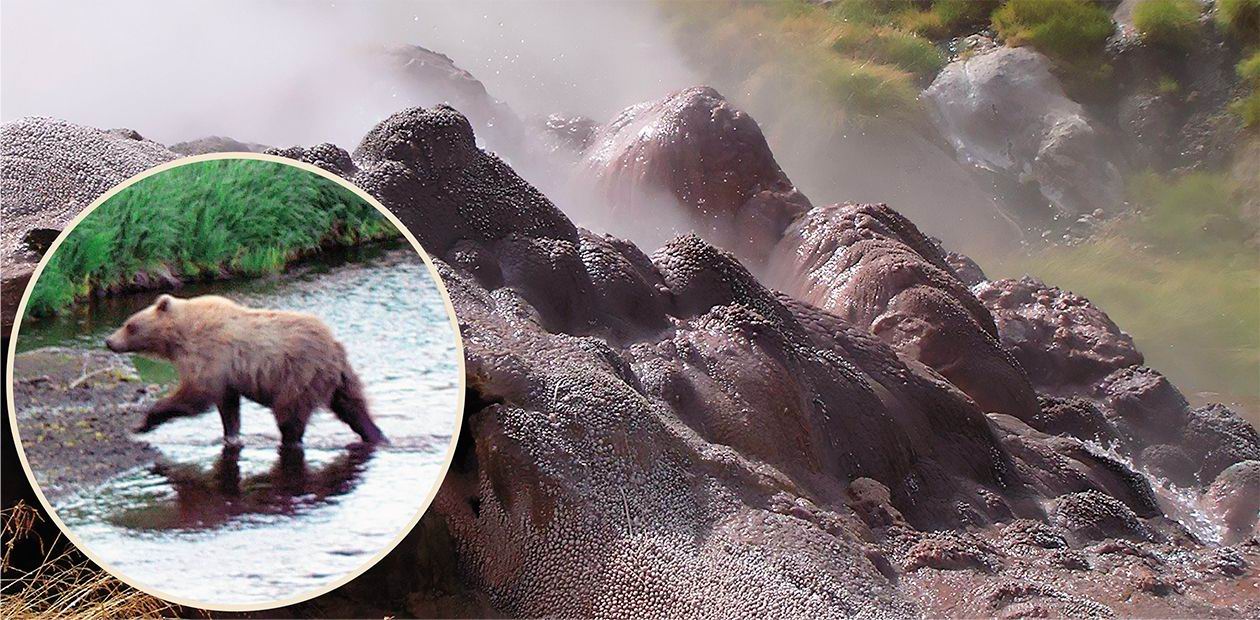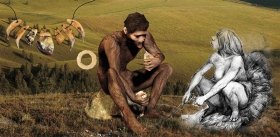Journey to the Invisible World
It is in human nature to look for the origin of everything around us. In order to look in the source of life, we should find our elementary forebears that gave life to all living beings on Earth. Our task can be made easier if we assume that life has originated from hypothetical extraterrestrials or by God’s will. These assumptions are well-grounded; investigations and findings of the last few years have provided documentary evidence that there are structures similar to biological in meteorites. However, as we can perceive signs of change and evolution even during our short lifetime, we cannot resist the temptation to try to reconstruct the sequence of events that occurred nearly 4 billion years ago. Are there any organisms on Earth that have preserved the features of their forefathers? There are: they are microorganisms
We have erected a monument to Escherichia coli In our central square. It’s life-size...
(from the folklore of the Koltsovo think-tank community, Novosibirsk)
Myriads of tiny creatures hidden from the eye are all around us. No matter where we look, we will find some kind of traces of their existence. The number of prokaryotes (elementary unicellular microorganisms that lack a cell nucleus) is about 5x1030 (Whitman et al., 1998). This means that a spade of the earth we dig at our dacha contains more microorganisms than all the human beings living on our planet.
Microorganisms live in every habitat: it is hard to imagine a nook on Earth without these truly ubiquitous creatures. We can subscribe to the latter statement with the following reservations: first, microorganisms can only live in the media that have liquid water; and second, they sometimes “survive” rather than “live”. Nonetheless, trust in the “almighty microorganisms” has transformed our view on life: any sign of water found on a planet is taken as an indisputable proof that there is life there. As the living classic said, “Where there is life, there are microbes” (Woese, 1994). Then what is unique about these tiny organisms from the point of view of evolution, apart from the small size?
Terrestrial extraterrestrials
What distinguishes microorganisms from all other living beings on Earth is their potential immortality. Microorganisms reproduce through binary fission, that is, divide in two, which means that they have no predecessors, no dead ancestors.
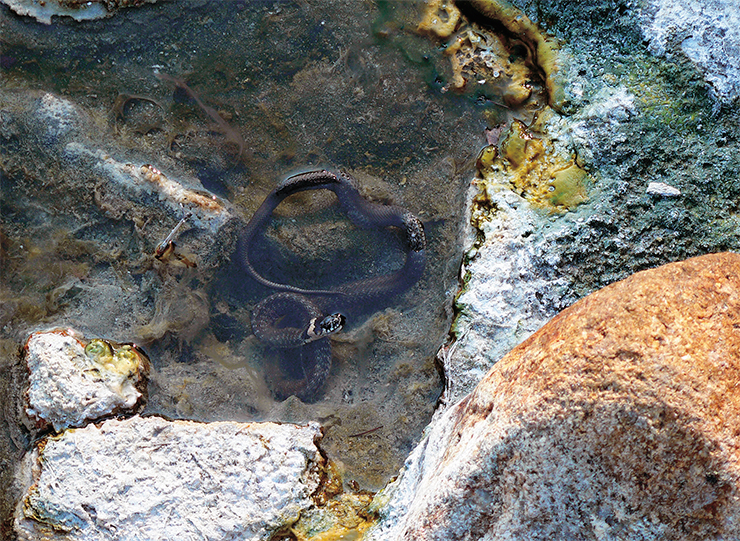
The genome of living bacteria contains all the changes that have taken place in themselves, and not in their late parents – this is their peculiar “life chronicle”. In effect, microorganisms are “clones” and as such they are equivalent.
Thanks to this feature, it is most exciting to study microorganisms living in the conditions similar to those existing on ancient Earth and in the places least interfered by man. Also, because of their reproduction mode, microorganisms have no ontogenesis (individual development) in the conventional meaning of this word.
Another unique quality is extremely high reproduction rate under favorable conditions. Record-holders can double their number as quickly as in 10 minutes, and Escherichia coli, a traditional subject of investigation of gene engineers, doubles in half an hour. Simple arithmetic calculation shows that in a day a single bacterium can generate a multitude of its look-alikes, whose number will be hundreds and thousands times greater than the number of all other inhabitants of the Earth.
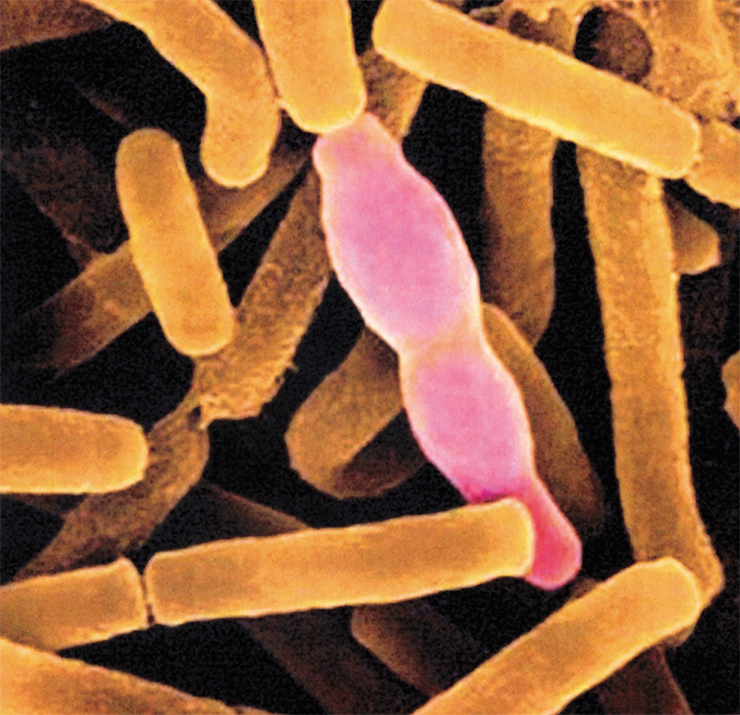 The rapid division is counterbalanced by another property: ability to stay for a long time in an inactive, anabiotic state. These stagnation periods can last tens and hundreds million years (Cano et al., 1995). If in this state of anabiosis no crucial changes occur in the genome, it means that there are some creatures in nature whose biological clock stopped all this time back. (To compare, mankind is considered to be approximately 4.4 million years old.)
The rapid division is counterbalanced by another property: ability to stay for a long time in an inactive, anabiotic state. These stagnation periods can last tens and hundreds million years (Cano et al., 1995). If in this state of anabiosis no crucial changes occur in the genome, it means that there are some creatures in nature whose biological clock stopped all this time back. (To compare, mankind is considered to be approximately 4.4 million years old.)
Yet another property of microorganisms that engages our attention is their complete dependence on the living conditions. It is changes in the environment that trigger evolution of new forms of these organisms; on the other hand, a relatively steady medium leads to the extreme conservatism of the genome as is the case, for instance, with the intestine inhabitants Escherichia coli and Salmonella typhimurium in contrast to the genus of soil-dwelling bacilli that live at large.
As for the microorganisms’ genome, its size is strictly limited and information density is remarkably high: 90–95 % of bacteria’s genome is coded by proteins or stable RNAs.
Apart from this, the abilities microorganisms exhibit in exchanging genetic material (the so-called lateral transfer) are overwhelmingly greater: there are no genetic barriers between species or between kingdoms.
It goes without saying that one of the most important and striking qualities of these organisms is their enormous variety. One may have an impression that there exists some kind of a “mega-genome”, which makes it possible to bring to life virtually any gene combinations, provided that they do not contradict each other.
Tastes Differ
A more detailed speculation on the advent of life on the Earth in the ancient extreme conditions is beyond the scope of this article. Actually, we rely on the following assumption: if our planet was a gradually cooling ball of fire, the best candidates for the role of forebears among the existing organisms were extremophiles, which are microorganisms that thrive in harsh conditions.
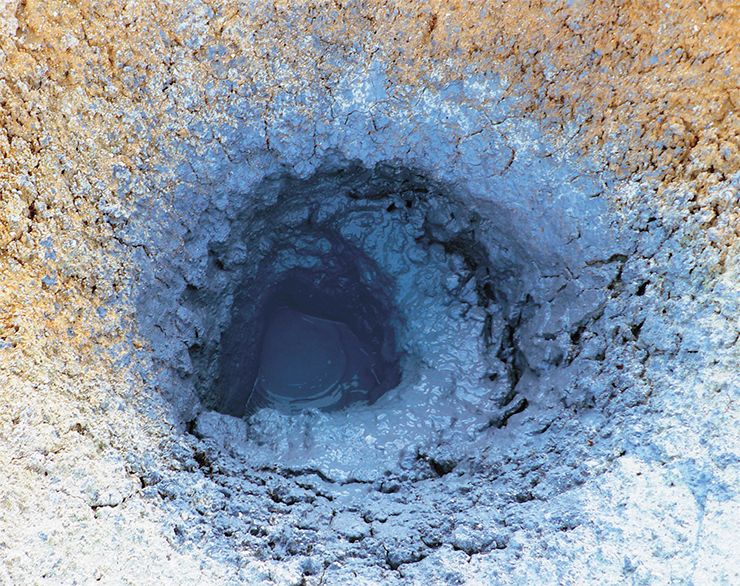
It is believed that a promising place for life origin is deep-water thermal vents, hot water jets gushing out of faults (Fliermans, Balkwill, 1989; Dobretsov, 2005). In them, life is not only protected from the sterilizing effect of meteorites and cosmic radiation but also has a permanent source of energy and carbon. An indirect evidence in support of this hypothesis is the fact that if microbiological taxons have some thermophilic species, they, as a rule, are the most ancient representatives of the taxons.
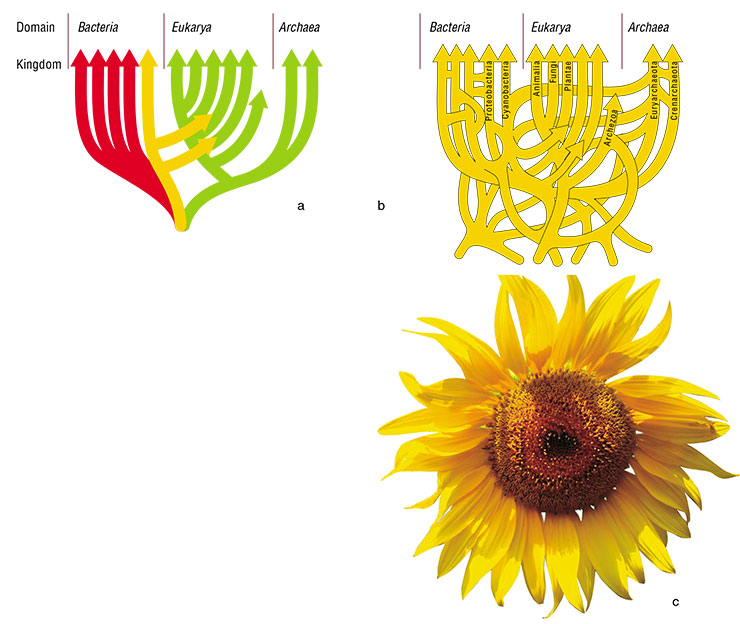
It should be noted that the concept of “extremophility” is debatable and requires clarification as it bears the stamp of anthropocentrism. For example, the temperature of 30 °С, which is quite normal for us, will be extreme for hyperthermophiles and at 21 °С many of them will die.
Do we have anywhere on the Earth conditions close to those that existed when the Earth was young? And if yes, where is this place? Taking into account the above- described remarkable qualities of microorganisms, we could examine the inhabitants of these “relic” places whose genome should have conserved their archaic features. Furthermore, using the reduction approach it would be possible to draw, through the comparison of genomes or their parts, a “universal tree of life” reflecting the philogenetic kinship of microorganisms.
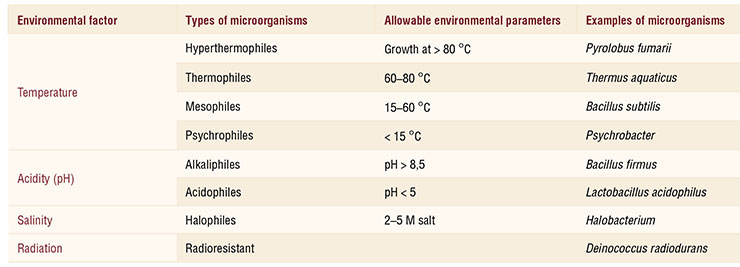
However, it is clear from the data we have that the bacteria, unlike higher organisms, cannot be systemized in the form of a “genealogical tree”. The “tree” of microorganisms first looked like overgrown bushes and by now has turned into something reminding a flower belonging to the Compositae family or a torn fishing net with lots of cells.
Microbe hunters
This country features a wide range of extraordinary natural habitats: from the permafrost zone to geysers and volcanoes.
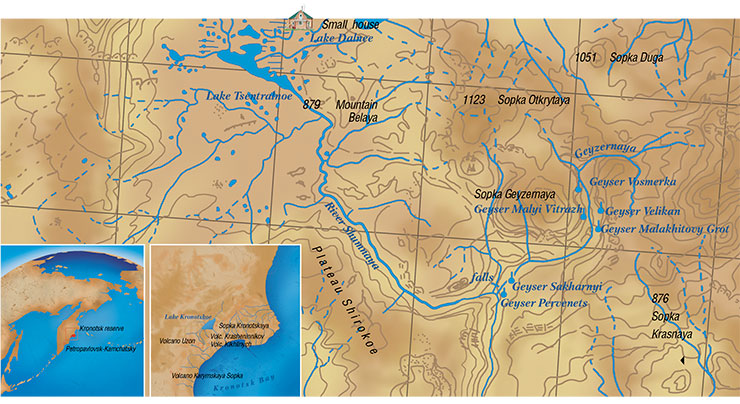
Geysers are as beautiful as they are rare. Big geysers can only be found in Iceland, in the Yellowstone National Park, and in New Zealand; and small geysers can be seen in California, Japan, and Tibet. In Russia, smoking geysers and hot springs are mostly concentrated in the east of the country, in Kamchatka. A promising place for investigating relic communities is the Kronotsky national reserve, which is home to twelve active volcanoes including Kronotskaya sopka 3,528 meters high; thermal lakes; waterfalls; and almost a hundred geysers. Most exciting for scientists are the Geyser Valley and the Uzon volcano caldera smelling of sulphuretted hydrogen*.
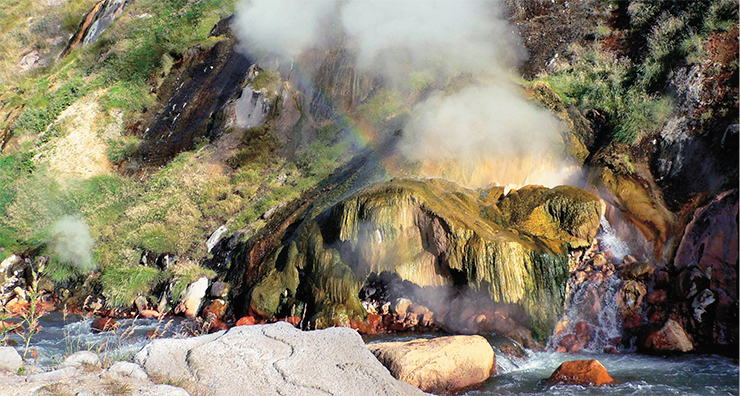
In the valley of the Geyser River, over 200 hot springs have been marked and tested hydrochemically. All the springs are pulsating, that is, their water supply is variable. About 90 springs belong to the geyser type, which means that their activities are cyclic: they erupt violently for a few minutes and then remain quiescent for hours or days, and neither steam nor water comes up to the surface. About 30 of such big springs have their own names.
An important advantage of the Geyser Valley is that it is a remote place hard to access. Moreover, the valley currently has the status of a highly protected natural feature.
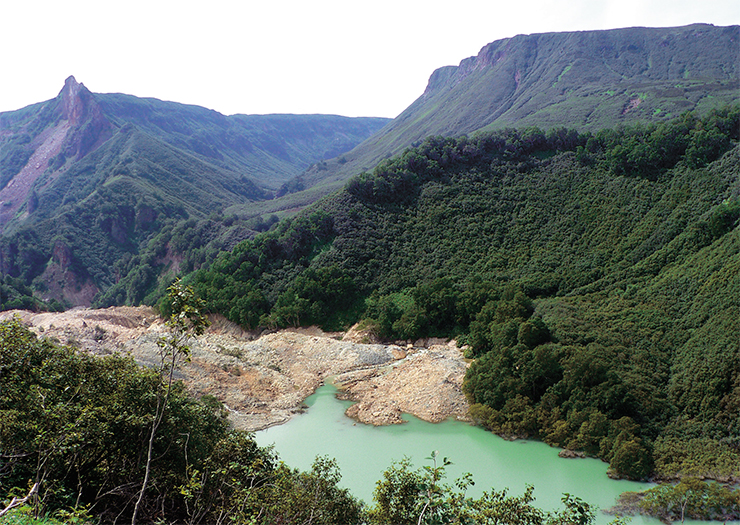
In August 2006, within the framework of the interdisciplinary integrated project “Origin and Evolution of Life on Earth: Physical-Chemical, Geological, Paleontological, and Biological Problems”, a scientific expedition to the Kronotsky national reserve was organized (Repin et al., 2007). During the expedition, over 200 samples of water, clay, mud, and soil from the geysers, hot springs, mud volcanoes, and mud baths were taken and sent to Novosibirsk. In addition, the “microbe hunters” paid two visits by helicopter to Uzon caldera, which is home to unique microorganisms.
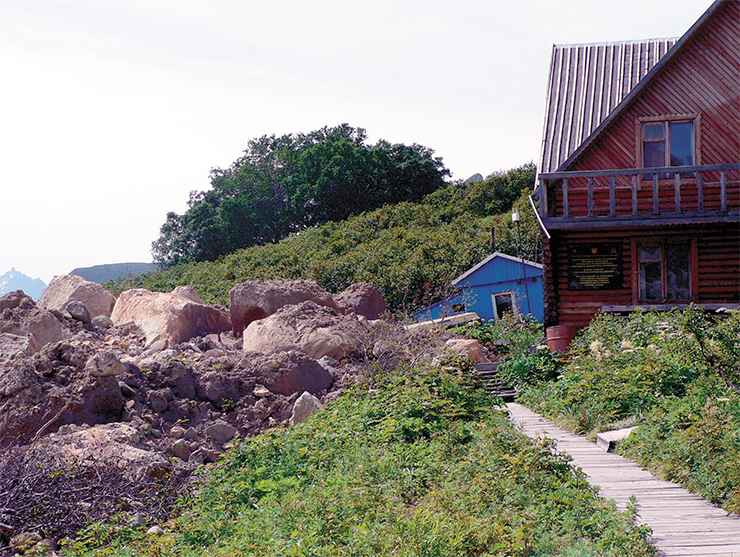
The timing of the expedition was perfect: the following year a powerful mud stream going along the Vodopadnaya River bed changed the look of the Geyser Valley beyond recognition. The geysers “Sugary” (“Sakharny”), “Neighbor” (“Sosed”), and “Lucky” (“Udachny”) were buried by avalanches; the “30-meter Waterfall” and “Jacuzzi” disappeared; the geyser “Little” (“Malyi”) has stopped its activity, and “Big” (“Bol’shoi”) has just started to show the first, faint signs of revival.
The mud flow, however, did not only bring disaster: it blocked the Geyser River, and as a result a picturesque lake, which we tentatively called “Unexpected”, came to life.
What have we found out?
A year after we came back from the expedition, it was time to draw some, yet preliminary, conclusions.
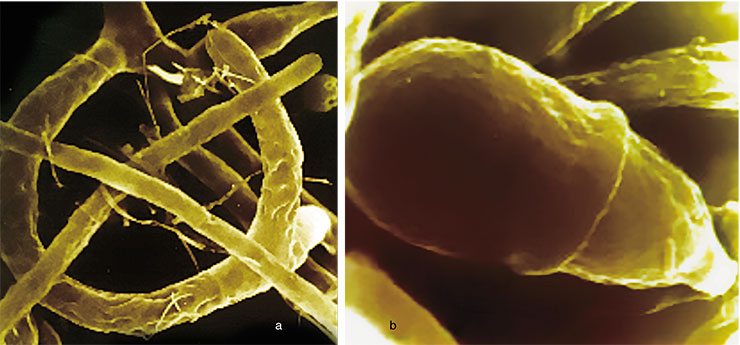
It should be noted that extraordinary living conditions naturally generate extraordinary microorganisms and extraordinary trophic (nutritional) connections within communities, and this concerns not only extreme temperatures. For instance, microbiological investigation into cores recovered from the bottom of Lake Baikal through deep boring showed that over 40 % of bacteria and about 70 % of fungi that had been cultivated possessed a combination of biochemical properties different from those of any other described microorganisms on the Earth (Repin et al., 2001). In other words, we were dealing with new species in the conventional meaning of the term.
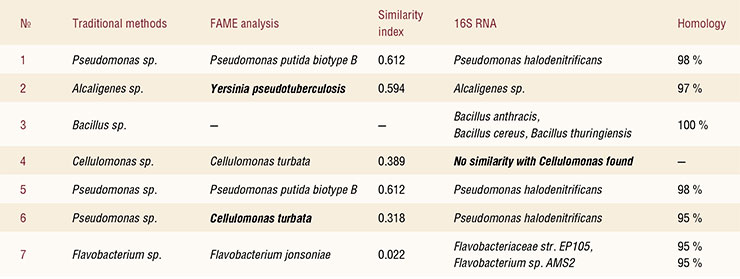
Microbiological studies of the brain of the so-called Yukagir mammoth, whose age is estimated at 18,000 years and whose remains, judging by the condition of the tissues, have stayed in the frozen state throughout this entire period, also produced some striking results (Repin et al., 2007).
Amazingly, reliable methods for microorganisms identification have shown inconsistent results (Repin et al., 2007).
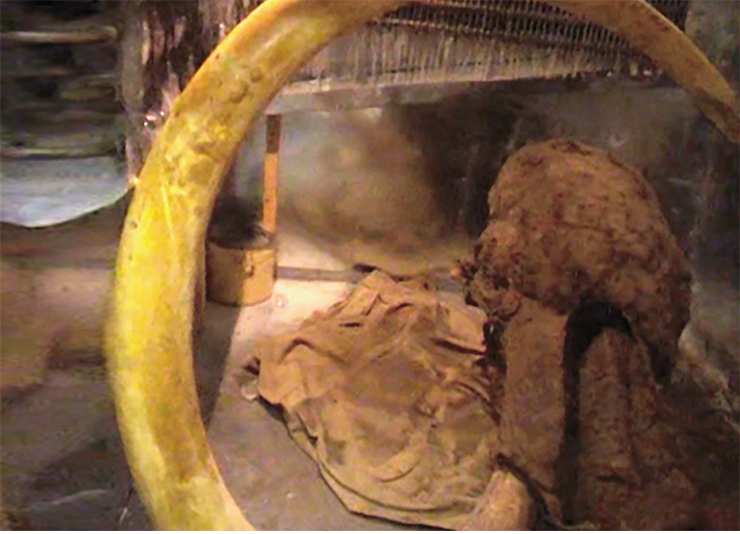
Similar disagreements were found when investigating ancient microorganisms taken out of amber-entombed insects (Greenblatt et al., 1999). Sometimes, combinatorial shifts were detected: expected characteristics of the strain were replaced with others which belonged to one, sufficiently restricted, pool of properties. This made the authors suggest that even in amber evolutionary changes of the genotype took place at the level of information exchange, which can indirectly account for microorganisms’ survival in isolated environment during dozens of millions of years.
An important observation was made when samples taken from a hot spring in Kamchatka were analyzed. The microorganisms found were checked exhaustively for the strains that produce certain restriction-modification fragments of nucleic acids. As a result of this study, the producer of a rare enzyme was discovered which “recognized” and broke down the nucleotide chain 5’-CCNNNNN^NNGG-3’.
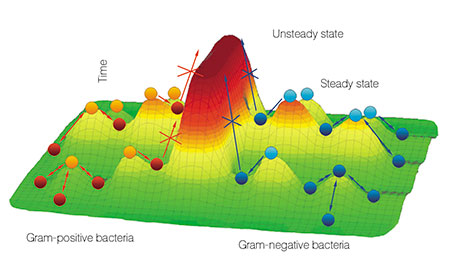 In ten years, samples were taken from the same spring and similar studies were carried out. Among other producers of these enzymes, bacteria were found with the characteristics detected earlier. Interestingly, there were a few of these microorganisms, and they all differed, in their biochemical and morphological properties, both from each other and from the earlier detected bacillus. These results may support, indirectly, the assumption that if a gene system plays a certain (important) role in sustaining the life of a microbiological community, it is preserved in nature for a long time, though not necessarily in the same strain. As a result of horizontal gene transfer, it may move to another strain, species, genus, or even kingdom.
In ten years, samples were taken from the same spring and similar studies were carried out. Among other producers of these enzymes, bacteria were found with the characteristics detected earlier. Interestingly, there were a few of these microorganisms, and they all differed, in their biochemical and morphological properties, both from each other and from the earlier detected bacillus. These results may support, indirectly, the assumption that if a gene system plays a certain (important) role in sustaining the life of a microbiological community, it is preserved in nature for a long time, though not necessarily in the same strain. As a result of horizontal gene transfer, it may move to another strain, species, genus, or even kingdom.
Microbiological investigation of Kamchatka revealed a lot of remarkable microorganisms not known before (Andreeva et al., 2005). These studies confirmed again the amazing plasticity of microorganisms’ genomes and an excellent ability to combine their genetics.
For example, a firm rule of microorganisms’ systematics is that spores can be generated only by Gram-positive bacteria. Our Kamchatka investigations have proved that Gram-negative bacteria can also produce spores. These facts strengthen the theory suggested before (Repin et al., 2001).
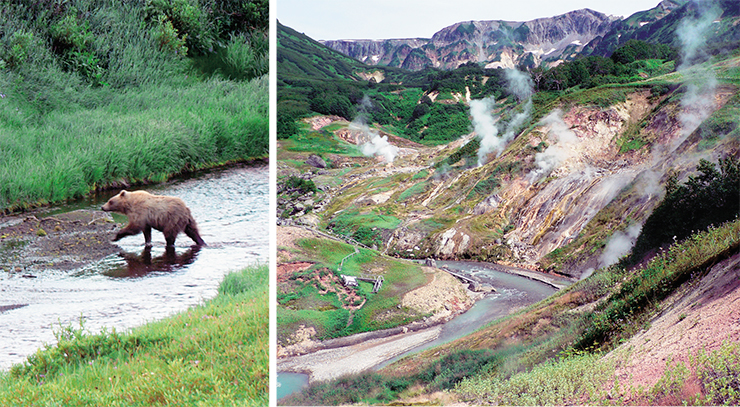
The facts enumerated above make up only a small share of the achievements made in exploration of life in extreme conditions, where we are dealing with closely interrelated theoretical and applied problems. Scientists of the RAS Siberian Branch feel very enthusiastic about this project, and the research station built in the Uzon caldera in 2007 (Project IPP-DOE #10618) should be of great help to them.
Investigations within the framework of the interdisciplinary integrated project continue in some other places of Russia. Thus, in 2007 an expedition to Zabaikalie (Trans-Baikal region), which has hot springs featuring a combination of unique characteristics – high temperature, pH, and the presence of radon – was organized.
Of special interest to scientists are microorganisms of alkaline hydrotherms with moderately high temperatures. These conditions prevent the development of higher organisms and inhibit their influence on the world of bacteria. Such places are exceptionally few: in Russia, apart from the Trans-Baikal region, here belong the “Udachny” (“Lucky”) geyser of the Kamchatka Geyser Valley. We suppose that in Zabaikalie archaebacteria Crenarchaeota must be found, the study of whose genetic organization might help reveal evolutionary relations and direction of development of modern archaea and bacteria.
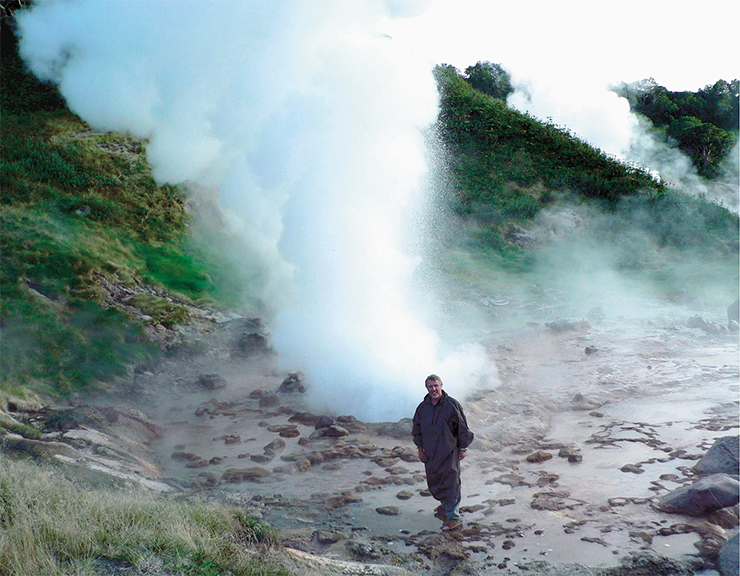
There are a lot of tasks to attack, and the scientists believe that the interdisciplinary nature of the project might help to throw light on many problems, so far unresolved.
References
1. Dobretsov N. L. On the early stages of life origin and evolution // Vestnik VOGIS. 2005. V. 9. N. 1. P. 43–54.
2. Repin V. E., Deineko Ye. V., Pestunova O. P., Kolchanov N. A., Vlassov V. V., and Prokopkin I. G. Journey to a hot spot // Science First Hand. 2007. N. 1(13). Pp. 98–117.
3. Rozanov A. Yu. Cyanobacteria and possibly lower fungi in meteorites // Soros Educational Journal. 1999. N. 10. P. 61–67.
4. Revival and identification of bacterial spores in 25–to 40-million-year-old Dominican amber // Science. 1995. V. 268. P. 1060–1064.
5. Greenblatt C. L, Davis A.,Clement B. G, Kitts C. L., Cox T., and Cano R. J. Microbial Diversity of Amber // Microbial Ecology. 1999. V. 38. P. 58–68.
6. Repin V. Е., Torok T., Kuz’min M. I. Biodiversity of microorganisms from bottom sediments of Lake Baikal // Russian Geology and Geophysics. 2001. V. 42. № 2. P. 219–221.
7. Whitman W. B., Coleman D. C., Wiebe W. J. Procaryotes: the unseen majority // PNAS. 1998. V. 95. P. 6578–6583.
8. Woese C. There must be a procaryote somewhere: microbiology’s search for itself // Microbiol. Rev. 1994. V. 58. P. 1–9.
*For more detail see SCIENCE First Hand. 2007. N. 1(13).


